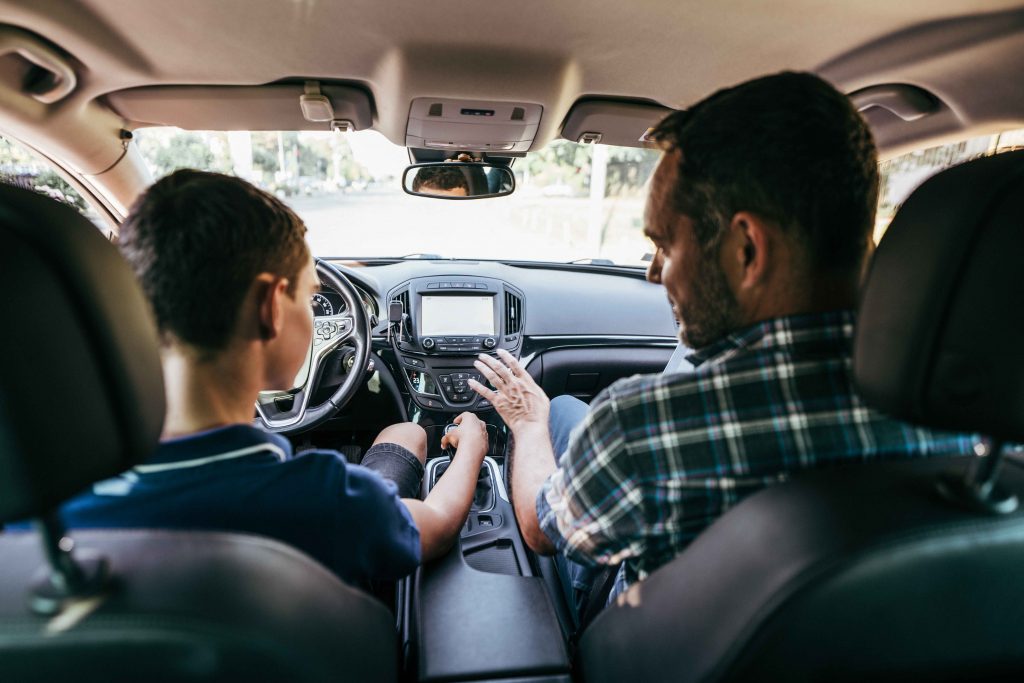Through the years, you’ve watched your children grow. You’ve seen them through their first day of school, first recital, school dance, and other firsts. And now you face the prospect ofhanding them the keys to a car.
A driver’s license is often seen as a rite of passage as teens become more independent and enter young adulthood. It is both an exciting and sometimes scary time for parents and teenagers. October 15 marks the beginning of National Teen Driver Safety Week. Now in its sixteenth year, this week remains dedicated to raising awareness and finding ways to prevent one of the leading causes of teen injury and death—motor vehicle crashes.
What Parents Can Do To Encourage Safe Driving:
You can make a big difference in keeping your teen driver safe. Your advice and guidance go a long way and will likely stay with your teen after they begin driving alone.
Here are some tips that can help youkeep your teenage driver safe.
- First things first, buckle up!Seat belts are proven to reduce the risk of injuries and death in car crashes by almost half. Require your teen to wear a seatbelt whenever they are in a car. One of the best ways to keep everyone in the car safe is to use your seatbelt.
- Be a good role model.Teen drivers most often learn from watching their parents. Because of this, you need to wear your seatbelt, avoid speeding, and obey traffic rules. No distracted driving, drinking and driving, texting while driving, or road rage. Try to be consistent between the lessons and messages you tell your teen and your driving behaviors.
- Practice makes perfect.Teens are inexperienced drivers. Driver’s Ed programs provide classroom education and a few hours of behind-the-wheel training. It is estimated that it takes up to 50 hours of driving to gain the experience to become a relatively proficient driver. So, ride along with your teen as much as you can. Watch closely and give them suggestions on how to improve their driving skills.
- Change the scenery.Try practicing with your teen at different times of the day, and in different types of weather and traffic. There is no replacement for experience. The more experience they have, the more prepared they will be when they are finally ready to drive alone.
- Limit distractions.Teenagers can be easily distracted, so consider setting limitations on the number of passengers and who their passengers are (i.e. other teens, friends, inexperienced drivers). Some states have implemented graduated licensing programs to address minimum adult supervision requirements, nighttime driving, curfews, and passenger limitations for teen drivers. Make sure you look into your state’s laws.
- Limit nighttime driving.Driving at night can be more demanding, especially for inexperienced drivers. Some studies have shown that teens are up to four times more likely to have car accidents at night than during the daytime.
- 规则s of the road.Discuss the rules of the road with your teenager and the consequences of not following those rules. Consider creating aParent-Teen Driving agreementthat puts your rules in writing and clearly sets limits and expectations.
What Teens Can Do To Practice Safe Driving:
得到你的许可和第一辆车非常exciting and a big responsibility. Here are some things to remember every time you get behind a wheel.
- Buckle up!You will likely hear your driving instructors, parents, family, and friends say it, too. Wearing your seatbelt can help prevent injury and death if a car crash occurs. Make sure you and your passengers are buckled in before putting the car into motion.
- Get familiar.Take some time to familiarize yourself with any vehicle you drive. Make sure you know where important features are located, such as the turn signals, hazard lights, windshield wipers, adjustments for the mirrors, and steering wheel.
- Plan ahead.Know where you are going before you leave, and make sure you have directions. Try to leave early to give yourself more time to get to your destination. Pay close attention to the weather conditions when and where you will be driving.
- Avoid distractions.Always keep your hands on the wheel and eyes on the road. Distractions include any activity that takes your attention away from the road and/or driving safely. Examples include texting, putting on makeup, talking on the cell phone (including hands-free), looking at navigation systems, eating, and having the music up too loud.
- Don’t drive drowsy, angry, or upset.Sometimes, your emotions can be distractions to driving safely on the road.
- Do not drive impaired.Alcohol and drugs can slow down your reaction time and can greatly impair your driving skills. No driving or riding with others who are under the influence of alcohol or drugs.
- Obey traffic rules.Make sure you follow the speed limit. Going too fast can give you less time to react to traffic or road obstacles that may be nearby. Remember to use your turn signals as this helps other drivers know what you are doing.
Buckle up and stay safe!







Comments